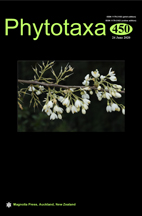Abstract
During a survey of the terrestrial diatom flora of the Maritime Antarctic Region, an unknown Luticola taxon that could not be identified using the currently available literature was observed on two islands of the South Shetland Archipelago. After a detailed morphological analysis and comparison, the unknown taxon is described as Luticola puchalskiana sp. nov. The new species can be separated from other Luticola species based on its valve dimensions, stria density and the shape of both central and terminal raphe endings. Two populations of the new taxon were observed in samples collected from terrestrial habitats. The morphology of Luticola puchalskiana is elaborately described and illustrated using both light and scanning electron microscopy observations. A comparison is made with a large number of other morphologically similar Luticola species from the entire (sub)Antarctic Region.

